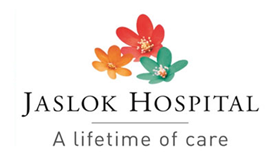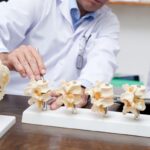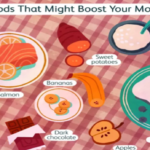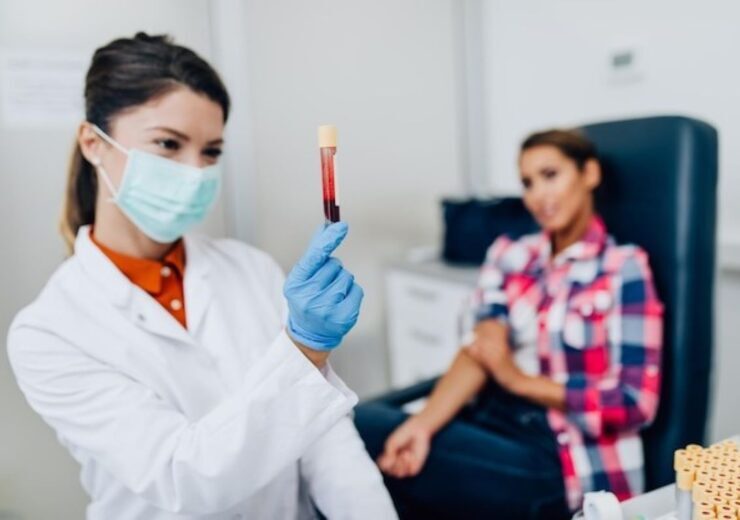PRP Treatment for Ligaments

Overview: Platelet-rich Plasma and Ligament Injuries
Ligament injuries can be a real pain, but with Platelet-rich plasma and ligament injuries, the healing journey takes a positive turn. Ligament injuries are more common than we might think, affecting people of all ages and activity levels. Whether it’s a sprain from a misstep or a strain from overexertion, these injuries can be a real pain. Fortunately, PRP treatment for ligaments, offers a promising solution for speeding up the healing process. Let’s take a closer look at how PRP can be a game-changer for those dealing with ligament injuries.
Common Ligament Injuries
- Sprains and Strains: Ligaments are like the body’s elastic bands, connecting bones and allowing movement. When they get stretched too far or torn, it results in a sprain or strain, causing pain and limited mobility.
- Tendonitis: Sometimes, the tendons connected to ligaments become inflamed, a condition known as tendonitis. This inflammation can lead to discomfort and difficulty moving the affected joint.
- ACL Injuries: ACL injuries, common among athletes, find relief with Platelet-rich plasma and ligament injuries, offering a potential surgery alternative. These injuries can be particularly challenging and may require comprehensive treatment.
Understanding these common ligament injuries helps in appreciating the impact they can have on daily life and the need for effective treatment options.
Why Ligaments are Prone to Injury
Ligaments, while crucial for maintaining the stability of our joints, are somewhat vulnerable to injury due to their unique role. They connect bones and provide support during movement, making them susceptible to overstretching or sudden impacts. Factors such as poor conditioning, inadequate warm-up, or repetitive stress on the joints can increase the risk of ligament injuries. By understanding these vulnerabilities, we can better appreciate the importance of timely and effective treatments like PRP treatment for ligaments.
How PRP Aids Ligament Healing
Now, let’s explore how PRP works its magic in promoting ligament healing. This treatment uses your body’s growth factors, highlighting the benefits of PRP therapy for ligaments by speeding up the natural healing process. During the treatment, a small amount of blood is drawn, and through a specialized process, platelets containing growth factors are concentrated. These growth factors play a crucial role in accelerating the natural healing response of the body. When PRP is injected into the injured ligament, it acts as a powerful stimulant, enhancing the repair process and reducing recovery time. Essentially, PRP provides a boost of the body’s own healing mechanisms where it’s needed the most, offering a targeted and effective approach to ligament injuries.
The PRP Treatment Process
Ligament injuries can throw a wrench into your daily activities, but fear not – process of PRP treatment for ligaments is here to help you bounce back. Let’s break down each step to understand how this innovative approach works.
Patient Evaluation and Diagnosis
Before diving into any treatment, it’s crucial for your healthcare provider to assess the extent of your ligament injury. This typically involves a thorough examination and, in some cases, diagnostic imaging like X-rays or MRI scans. The goal here is to understand the specific nature of the injury, whether it’s a sprain, strain, or more complex issues like tendonitis or ACL injuries.
The information gathered during the evaluation guides the healthcare team in determining if PRP treatment is the right fit for you. Not everyone may benefit from this approach, so a tailored approach ensures you receive the most effective care.
PRP Preparation: Extracting Growth Factors
Now that your healthcare provider has given the green light for PRP treatment for ligaments, the next step involves harvesting the healing potential within your own blood. This process is surprisingly simple. A small amount of blood is drawn from your arm, much like a routine blood test you might have experienced before.
Once the blood is drawn, it undergoes a spinning process in a centrifuge. This high-tech machine separates the platelets – the tiny powerhouses in your blood that contain growth factors. These growth factors are the superheroes of the healing process, promoting cell growth and tissue repair.
Administering PRP into the Injured Area
With the concentrated PRP ready, it’s time for the exciting part – administering it into the injured area. Your healthcare provider will use ultrasound or other imaging techniques to precisely locate the site of the injury. This ensures that the PRP is delivered exactly where it’s needed most.
The PRP is then injected into the injured ligament or surrounding tissue. The growth factors in the PRP get to work immediately, kickstarting the natural healing process. This targeted approach enhances the body’s ability to repair itself, providing a boost to the damaged ligaments.
By directly addressing the root of the problem, PRP treatment aims to expedite the healing process, allowing you to get back on your feet and resume your regular activities sooner than traditional methods might allow.
Advantages of PRP for Ligament Injuries
Ligament injuries can be quite a setback, affecting your daily life and mobility. The good news is that Platelet-Rich Plasma (PRP) treatment offers several advantages in addressing these issues.
Enhanced Healing
When it comes to healing ligament injuries, speed matters. PRP contains concentrated growth factors that act like superheroes, accelerating the natural process of ligament healing with PRP therapy. These growth factors stimulate the repair of damaged tissues, allowing your body to bounce back quicker than it might on its own. Imagine your body’s healing process as a construction site. PRP is like bringing in extra workers to speed up the repairs, ensuring that your ligaments mend efficiently and effectively. PRP turbocharges your body’s natural healing powers, showcasing the benefits of PRP therapy for ligaments.
Reduced Inflammation
Inflammation is a common sidekick to ligament injuries, causing pain and swelling. PRP swoops in to calm down this inflammation. The concentrated growth factors have anti-inflammatory properties, helping to alleviate discomfort and promote a more comfortable healing journey.
It’s like having a firefighter on standby, ready to douse the flames of inflammation and make your recovery process less fiery and more soothing.
Minimally Invasive
Nobody likes the idea of going under the knife. The beauty of PRP treatment is that it’s minimally invasive. Instead of a major surgery, a small amount of your own blood is drawn and processed to create the PRP. The PRP is then carefully injected into the injured area.
Think of it as a precision operation with a tiny needle, minimizing trauma to surrounding tissues. This approach not only reduces the risk of complications but also means less downtime for you.
Improved Function
The goal of ligament injury treatment is not just to heal but to restore normal function. PRP doesn’t just patch things up; it actively contributes to improved functionality. By enhancing the healing process and reducing inflammation, PRP helps you regain strength and flexibility, allowing you to move more freely and comfortably.
Picture PRP as a personal trainer for your ligaments, guiding them through a tailored recovery program to ensure they come back stronger and more resilient than before.
Potential Surgery Alternative
The prospect of surgery can be daunting, but PRP offers a potential alternative in some cases. Depending on the severity of the ligament injury, PRP may provide sufficient healing without the need for invasive surgical procedures.
Think of it as giving your body a chance to heal itself with a little boost from within, potentially sparing you from the complexities and risks associated with surgery. It’s like taking the scenic route to recovery, avoiding the detour through the operating room when possible.
Potential Risks and Considerations
Platelet-Rich Plasma (PRP) treatment is generally safe, but like any medical procedure, it’s essential to be aware of potential risks and considerations.
Infection Risk
While infection is rare, it’s crucial to acknowledge the possibility. When PRP is administered, there’s a slight risk of introducing bacteria to the injection site. To minimize this risk, healthcare professionals follow strict sterile procedures during the PRP preparation and administration process. Patients can contribute to preventing infections by keeping the injection site clean and following post-treatment care instructions diligently.
Allergic Reactions
Allergic reactions to PRP are exceptionally uncommon, primarily because the treatment utilizes the patient’s own blood components. While rare, it’s good to be aware of potential responses to platelet-rich plasma for ligament injuries. However, it’s vital to inform your healthcare provider like us – the best hospital for platelet-rich plasma in Mumbai, Jaslok Hospital, about any known allergies or sensitivities. This helps them take necessary precautions and address any concerns you may have. As a precautionary measure, practitioners often conduct a small skin test before the full PRP treatment to rule out any unexpected allergic responses.
Rehabilitation Challenges
Rehabilitation after PRP treatment plays a pivotal role in ensuring a successful outcome. While PRP accelerates the healing process, rehabilitation challenges may arise, especially in cases of more severe injuries. Patients might face difficulties in regaining full range of motion or strength, requiring dedicated physical therapy and exercises. The key here is patience; consistent rehabilitation efforts, guided by healthcare professionals, significantly contribute to successful recovery.
Patient Eligibility for PRP
Not everyone is a candidate; your doctor will decide if PRP injections for ligament recovery are the right fit. Patient eligibility depends on various factors, such as the type and severity of the injury, overall health, and medical history. Individuals with certain medical conditions, like blood disorders or active infections, may not be suitable candidates. It’s crucial for healthcare providers to conduct a thorough evaluation before recommending PRP. Your doctor will discuss your medical history, conduct diagnostic tests, and assess the specific characteristics of your injury to determine if PRP is the right option for you. Open communication with your healthcare team ensures that you receive the most appropriate and effective treatment for your individual circumstances.
Recovery and Rehabilitation After PRP
Recovery after PRP treatment is like nurturing a delicate plant back to health. It requires time, care, and a dash of patience. Let’s walk through the stages of post-PRP recovery.
Post-PRP Treatment Guidelines
Immediately after your PRP session, your doctor will provide you with a set of guidelines to ensure a smooth recovery. These may include:
- Rest and Ice: Give your body the time it needs to heal by avoiding strenuous activities. Applying ice to the treated area can help reduce any initial swelling or discomfort.
- Medication Management: Over-the-counter pain relievers may be recommended to manage post-treatment soreness. Always follow your doctor’s advice on medication.
- Hydration and Nutrition: Stay hydrated to support the healing process. A balanced diet rich in nutrients can further enhance recovery.
- Avoiding Certain Activities: Your doctor might advise against specific movements or activities that could strain the treated area. It’s crucial to adhere to these recommendations for optimal healing.
Physical Therapy and Exercise Recommendations
As you progress through the recovery phase, your doctor may introduce physical therapy and exercises tailored to your condition. These exercises serve several purposes:
- Restoring Range of Motion: Gentle movements help prevent stiffness and improve flexibility in the treated area.
- Building Strength: Gradual strength-building exercises target the surrounding muscles, providing additional support to the healing ligament.
- Balance and Coordination: Some injuries may impact your balance. Specific exercises can address these issues, promoting stability.
Your physical therapist will guide you through these exercises, ensuring they align with your healing process and gradually advance as your strength improves.
Monitoring Progress and Follow-up Care
Regular check-ins with your healthcare provider are crucial during the recovery period. These appointments serve multiple purposes:
- Assessing Healing: Your doctor will evaluate the progress of the treated ligament and adjust the treatment plan accordingly.
- Addressing Concerns: If you experience any unexpected symptoms or discomfort, these follow-up visits provide an opportunity to discuss and address concerns promptly.
- Guiding Further Steps: Based on your progress, your healthcare team may recommend additional treatments, adjustments to exercises, or modifications to your daily activities.
Know what to expect and how to prepare. Check out our blog post: Preparing for Orthobiologics: What to Expect and How to Get Ready
In the journey of ligament recovery, PRP treatment for ligaments acts as a guiding light, accelerating the healing process. However, success depends on your commitment to the post-treatment plan. By following post-PRP guidelines, engaging in prescribed exercises, and staying vigilant during follow-up appointments, you pave the way for a robust recovery. Remember, the benefits of PRP therapy for ligaments shine through when coupled with patience and following your doctor’s advice, guiding you to bounce back stronger than ever.





